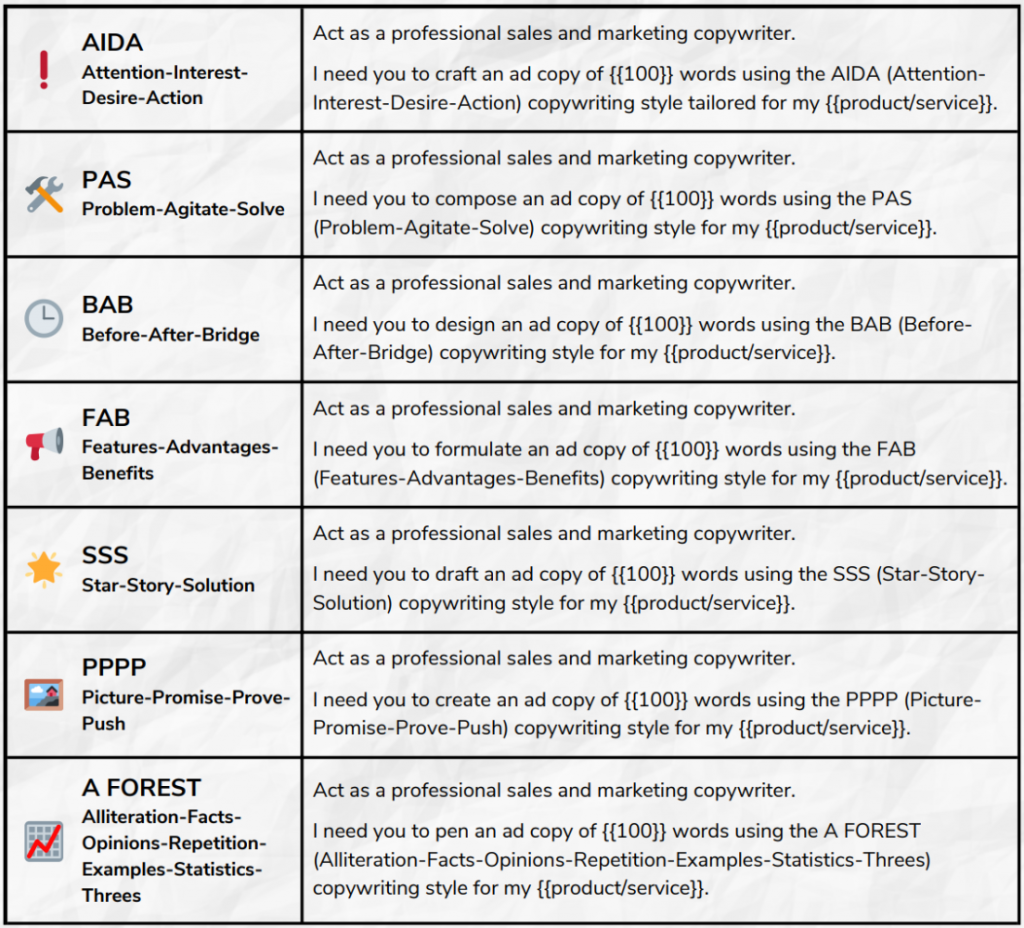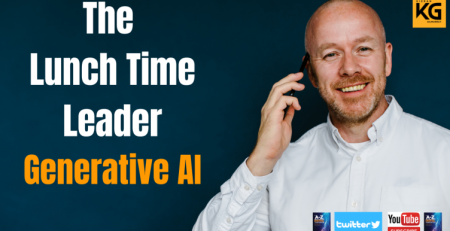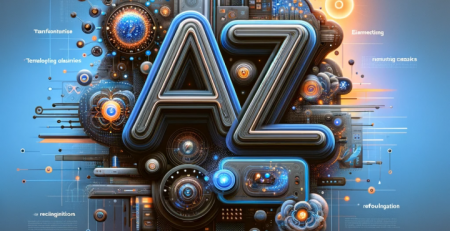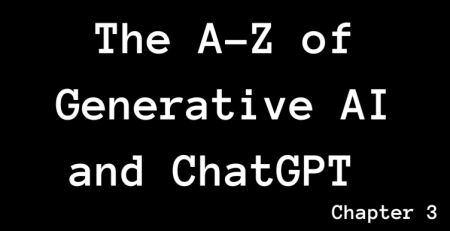The A-Z of Generative AI and ChatGPT – Chapter M
Thank you for reading my latest article on The A-Z of Generative AI and ChatGPT. Here at LinkedIn and at Kieran Gilmurray I regularly write about technology, Generative AI, Data Analytics, Artificial Intelligence, RPA, and Intelligent Automation.
To read my future articles simply join my network by clicking ‘Follow‘. Also feel free to connect with me via LinkedIn, Kieran Gilmurray, Calendly, Twitter, YouTube, Spotify or Apple Podcasts or read my latest book The A-Z of Organizational Digital Transformation to learn more.
What can you do with Generative AI would be much better phrased with ‘what ‘can’t you do with Generative AI❓’ If you can think it, and describe what you want then ChatGPT / Generative AI can create it across any category it has been trained on.
For example, you can create content on any topic including;
- Research and Design
- Customized social media campaign creation
- Review Legal Contracts
- Competitor Analysis
- Customer feedback analysis and suggestion as to how to reply
- Ideas for away days
- Plans for training and onboarding of new employees
- Strategy ideation
It is like having your very own army of eager interns, who are ready, willing and able to learn and complete any task you assign them. And for $20 a month, that is not a bad army to have at your disposal.
Take your productivity, employability, and business to the next level by reading my carefully curated series on Generative AI.
The A-Z of Generative AI
Welcome to the A-Z of Generative AI where each week I will give you an explanation of every aspect of this exciting new technology beginning with the letter A and ending with the letter Z. You will learn all there is to know about Generative AI in this series to rapidly level up your job prospects, your productivity, and your business.
Each article will clearly explain Generative AI terms so you can master this hot technology. Don’t miss out. Grab a lifetime of learning in the fastest time possible and start reading.
Making Sense of Generative AI
According to Gartner ‘Venture capital firms have invested over $1.7 billion in generative AI solutions over the last three years, with AI-enabled drug discovery and AI software coding receiving the most funding’. But that is just the tip an an expanding iceberg.’ (Source: Generative AI Use Cases for Industries and Enterprises).
Why is there is huge amounts of money pouring into Generative AI ❓
Businesses see its potential to transform their productivity and profitability.
What figures do the likes of BCG, McKinsey, Cisco, Harvard Business Review, Goldman Sachs and others claims Generative AI will bring to business?
- 𝟮𝟱.𝟭% increase in speed of delivery
- 𝟰𝟬% improvement in quality of service and product
- 𝟭𝟮.𝟮% more productivity per person
- 43% performance boost in new employee output
- 57% faster coding with Generative AI than without for new coders
- 1.5% or $7.7 trillion improvement in global GDP
- 30% of all roles will be automated using Generative AI
These figures are nothing if not impressive. For all these to materialise businesses will have to overcome a lot of barriers – I/O and bandwidth, skills, funding and strategy gaps, etc. – and invest deeply to change the way they work.
One thing is for certain, there is a lot of hype. What we need are real examples of Generative AI driving business value and more of those stories are appearing in the news every day e.g., booking.com, Addidas, AWS and more.
And more and more is expected to be delivered by Generative AI.
- By 2025, 30% of outbound marketing messages from large organizations will be synthetically generated, up from less than 2% in 2022. (Source: Generative AI Use Cases for Industries and Enterprises (gartner.com)
- By 2030, a major blockbuster film will be released with 90% of the film generated by AI (from text to video), from 0% of such in 2022. (Source: Generative AI Use Cases for Industries and Enterprises (gartner.com)
Generative AI feels like a transformative time in business and will transform how we create and operate like nothing before it. Many businesses and many roles will be impacted. But that should be an exciting prospect, not a scary prospect, for everyone.
Model
All generative AI business use cases are dependent on large language models.
But what is a Large Language Model (LLM)?
A Large Language Model is a type of artificial intelligence that has been trained on a lot of text to recognize patterns in data. You could have a model that predicts the weather, translates languages, identifies pictures of cats, etc.
Once an LLM has been trained on a lot of day you can have a really smart conversation with it, using natural language, and can create human-looking text based on a given prompt.
There are some very large LLMs. For example, OpenAI GPT3 is made up of over 175 billion trainable parameters and it can answer many different types of questions.

But you can also train smaller, more industry specific models too. Just like a model airplane is a smaller, simpler version of a real airplane, an AI model is a mathematical version of a real-world process. You can of course create a lot of different AI models e.g., for text, image creation, music, medical practice, marketing and so on.
As a result some LLMs can answer specific industry questions, write essays, create poetry, create a business plan, generate computer code and more besides.
- What it means for customers. A model can help a businesses customers get much more accurate product recommendations, have personalized conversations that engage in human-like interactions, or enable customer to get quick and easy answers to common questions in ways that still feel authentic.
- What it means for teams: This can help teams to predict customer behaviour, and segment customers into groups, create customer-facing content at scale, analyse customer feedback, answer common queries, and lots more.
The world of possibilities to use Generative AI is opening up in ways like we have never seen before. But what does that mean for computing?
Moore’s Law
For a very long time Moore’s law has stood as a longstanding observation in computing. First coined in 1965, Moore predicted that the number of transistors that can fit on a chip – a proxy for computing power – would grow exponentially, doubling approximately every two years.
Year-on-year advances in microchip technology are enabling a steep rise in the power of the world’s fastest computers.
This means, as time goes on, companies will be able to leverage larger and larger quantities of computing power, to make better Large Language and AI models.
And that means Generative AI and AI infused applications, networks and software systems will likely improve in quantity and quality at ever decreasing marginal cost. Artificial Intelligence will become an even larger part of our lives and as a result, AI will have a major impact on our jobs and the job market in the coming years.
What are others saying about GenAI?
Originating from a research paper by Hu and team, the Multi-Agent System (MAS) is presented as a digital environment where numerous intelligent agents interact autonomously, often outperforming individual units.
For illustration, think of a complex jigsaw puzzle. A single person might struggle, but a team focusing on specific segments might piece it together more efficiently.
Enter Generative AI with MetaGPT, a project that, given a simple prompt, produces a vast array of outputs. In a business scenario, hiring a new team member at $85,000 annually might raise various implications. A standalone Gen-AI model could provide a general overview. Yet, a bespoke model, tailored with specific business data, offers detailed insights.
Let’s enhance this. Instead of a single Gen-AI model’s perspective, imagine insights from departments like HR, Finance, and Marketing. This multi-lens approach provides holistic, role-specific answers.
The innovation continues. Instead of a generic AI, imagine specialized models for each department, curated without data overlap. While managing multiple models might seem daunting, consider outsourcing. For example, a Gen-AI model fine-tuned for finance, aligned with specific regional norms, and operated by a local finance expert. Think of it as “Gen-AI for Hire.”
This approach decentralizes Gen-AI, moving from a few entities controlling intelligence to widespread, democratic knowledge distribution. It prompts us to consider: Where else might such an approach be transformative?
Tony Nudd– Elevating Employee Contribution Through Artificial Intelligence
Need Help? Then contact me.
Need help understanding Generative AI and how it applies to your business ❓
Want someone to look at every role in your business and tell you how to use Generative AI to maximise business outcomes
Then book a FREE 30 minute introductory call so we can discuss your specific business’s Data Analytics, Large Language Model, Artificial Intelligence, or Generative AI needs – then click here.
Marketing Copywriting Prompts
Let’s bring Large Language Models and Generative AI to live. Imagine you are a marketing professional and want to use ChatGPT to help you. Below are a list of the common marketing methods and a prompt to help you develop unique content for your business.

Not only that but if wish to create unique art for a magazine, website or website you can prompt Generative AI applications like Dale-E or Stable Diffusion to come up with photo realistic imagery in no time at all.

Not only are PR and marketing agencies creating text, video, imagery and audio content – they are creating photo realistic models as well. For example, Spanish agency The Clueless created Aitana a virtual model and a life surrounding it, to gain attention and dollars from posting content to its Instagram feed.

Will we need real people or real actors in future? Time will tell if they are required or if the quality and cost point of production encourages their proliferation at the expense of human influencers or actors.
Letter M
Let’s provide you with some explanations of Generative AI terms beginning with M and some sample prompts to increase your productivity for each.
1. Meta-Learning in Generative AI
Meta-Learning in Generative AI involves training AI models to learn how to learn efficiently. It’s like teaching a student the best study strategies for different subjects. Meta-learning empowers AI models to adapt quickly to new tasks and data distributions, enabling more efficient content generation.
Real-World Example: An AI-powered recommender system uses meta-learning to quickly adapt to individual user preferences and recommend relevant products. For example, in an e-commerce platform, this meta-learning-enabled AI recommender system is introduced to improve user experience. For a new user, the system initially makes general recommendations. As the user interacts with these recommendations, the system quickly learns and refines its understanding of the user’s preferences.
Within a short period, the recommendations become highly personalized, leading to increased user satisfaction and higher engagement on the platform. This rapid adaptability showcases the effectiveness of meta-learning in real-world AI applications.
ChatGPT Prompt: “ChatGPT, make personal recommendations as to books this user [Link to user] would like best to further their AI education and learning.”
2. Model Architecture in Generative AI
Model Architecture in Generative AI refers to the structure and design of AI models. It’s like the blueprint of a building that determines its layout and features. The choice of model architecture significantly influences the capabilities and performance of Generative AI systems.
Real-World Example: A tech company is developing an AI-powered platform that includes features like image generation, text synthesis, and data modelling. The development team conducts a series of experiments, applying different AI model architectures to each feature. They find that GANs produce the most realistic and high-quality images, VAEs are highly efficient for compressing and reconstructing complex datasets, and RNNs excel in generating coherent and contextually relevant text. This comparative analysis helps the team in making informed decisions about which AI architectures to implement for optimizing each feature of their platform, leading to a more robust and efficient AI-powered product.
ChatGPT Prompt: “Implement a series of tests to compare the effectiveness of different Generative AI model architectures – like GANs, VAEs, and RNNs – in this application [application]”
3. Multi-Modal Generative AI
Multi-Modal Generative AI involves generating content that combines multiple modalities, such as text, images, and audio. It’s like creating a rich multimedia experience. Multi-modal AI models can synthesize diverse content types and enhance the quality of generated outputs.
Real-World Example: An AI-powered virtual reality system generates immersive environments with interactive elements using multi-modal content generation.
ChatGPT Prompt: “ChatGPT, demonstrate multi-modal content generation by providing responses that incorporate text, images, and other media formats.”
4. Memory-Augmented Neural Networks in Generative AI
Memory-Augmented Neural Networks in Generative AI are architectures that combine neural networks with external memory components. It’s like having an extended working memory to store and retrieve information. Memory augmentation enables AI models to handle complex sequences and improve long-term content generation.
Real-World Example: An AI storyteller uses a memory-augmented neural network to maintain story coherence and consistency across multiple chapters.
ChatGPT Prompt: “ChatGPT, employ memory-augmented neural networks to generate more coherent and contextually consistent narratives.”
5. Multi-Agent Generative AI
Multi-Agent Generative AI involves AI systems that interact and collaborate to generate content collectively. It’s like a team of specialists working together to solve complex problems. Multi-agent AI models can achieve more diverse and coherent content generation by pooling their individual expertise.
Real-World Example: A multiplayer game utilizes multi-agent generative AI to create dynamic and interactive in-game dialogue between characters.
ChatGPT Prompt: “ChatGPT, demonstrate multi-agent collaboration by generating content in a conversational setting, with multiple AI systems contributing to the conversation [link to AI systems].”
6. Model-based Reinforcement Learning in Generative AI
Model-based Reinforcement Learning in Generative AI combines generative models with reinforcement learning techniques. It’s like teaching AI models by providing rewards and punishments for their actions. Model-based reinforcement learning enables AI systems to optimize content generation based on desired outcomes.
Real-World Example: An AI language tutor uses model-based reinforcement learning to adapt its teaching strategies based on student performance.
ChatGPT Prompt: “ChatGPT, make recommendations as to what specific learning this student [upload student data] should undertake to help their understanding and learning of this topic [list topic] based on their current performance and their desire to move from a B grade performance to an A grade performance standard.”
7. Music Generation in Generative AI
Music Generation in Generative AI involves creating original musical compositions through AI models. It’s like having a virtual composer that can produce melodies and harmonies. Music generation AI can create music in various genres and styles.
Real-World Example: An AI-powered music composition tool generates background music for video games based on different moods and settings.
ChatGPT Prompt: “ChatGPT, showcase your music generation abilities by composing original melodies and harmonies for game [list game genre and desired music type [energetic, mysterious, etc.].”
8. Model Fine-Tuning in Generative AI
Model Fine-Tuning in Generative AI involves updating pre-trained AI models with additional data to adapt them to specific tasks. It’s like tailoring a ready-made suit to fit perfectly. Model fine-tuning enables AI systems to specialize in content generation for niche domains.
Real-World Example: An AI-powered legal assistant fine-tunes its language model to understand and generate legal documents accurately.
ChatGPT Prompt: “ChatGPT, read the following legal documents and summarise the judgements and also indicate how each judgement varies from the other.”
9. Model Compression in Generative AI
Model Compression in Generative AI involves reducing the size and complexity of AI models without significant loss in performance. It’s like compressing a high-resolution image to save storage space. Model compression enables AI deployment on resource-constrained devices.
Real-World Example: An AI-powered virtual reality application uses model compression to run complex content generation on mobile devices.
ChatGPT Prompt: “ChatGPT, generate a range of unique social media content on generative AI and optimise it for mobile devices.”
10. Model Inference in Generative AI
Model Inference in Generative AI refers to the process of generating content using pre-trained models. It’s like applying a well-learned skill to solve new challenges. Model inference allows AI systems to generate content quickly and efficiently.
Real-World Example: An AI chatbot performs model inference to generate responses to user queries in real-time.
ChatGPT Prompt: “ChatGPT, excel in model inference to provide prompt and accurate responses to user queries in various domains [List best practice sample queries and answers and provide new questions to be answered]”
Productivity Prompts
Understanding the A-Z of Generative AI opens up a rich world of possibilities for business leaders. These concepts provide valuable insights into how AI can create new content, solve problems, and drive innovation across various industries. Embracing Generative AI can lead to enhanced creativity, improved decision-making and a competitive edge in the rapidly evolving data infused digital landscape.
Every single role you can think of will be impacted by Generative AI. In fact understanding how to interact with ChatGPT will soon be an essential key skill.
Below are 5 roles that begin with the letter M with an example prompt each massively boosting role productivity.
Marketing Analyst– Marketing analysts collect and analyse data to provide insights into marketing strategies and campaign performance.
- Prompt: Analyze the results of a recent marketing campaign and identify key trends for improvement.
- Prompt: Create a customer segmentation analysis to tailor marketing messages for different target audiences.
Management Consultant– Management consultants advise organizations on business strategy, operations, and management.
- Prompt: Conduct a thorough organizational analysis to identify areas for efficiency gains.
- Prompt: Develop a change management plan to implement recommended improvements.
Mechanical Engineer- Mechanical engineers design, develop, and test mechanical systems and devices.
- Prompt: Design and prototype a new mechanical component for an existing product.
- Prompt: Conduct a stress analysis on a mechanical structure to ensure its safety and reliability.
Medical Doctor– Medical doctors diagnose and treat illnesses and injuries, providing medical care to patients.
- Prompt: Develop a personalized treatment plan for a complex medical case.
- Prompt: Stay up-to-date with medical research and advancements to enhance patient care.
Multimedia Designer– Multimedia designers create visual content for various media, such as websites, videos, and presentations.
- Prompt: Design a series of engaging social media graphics to promote a new product.
- Prompt: Create an animated video presentation to explain a complex concept to a diverse audience
Artificial Intelligence Services
Need Data Analytics, Artificial Intelligence, and Generative AI Services❓
Then book a FREE 30 minute introductory call so we can discuss your specific business’s Data Analytics, LLMs, Artificial Intelligence, or Generative AI needs today – click here.
Generative AI Research Articles
Some of the best Generative AI articles from some of the best sources on the internet.
- Generative AI and Public Sector – Denny Morais and Kieran Gilmurray
- ERP Today Generative AI for the enterprise – Pascal BORNET and Kieran Gilmurray
- Capturing the full value of generative AI in banking | McKinsey
- What is Generative AI & Why is It Important? | Accenture
- The A to Z of Artificial Intelligence | Time
- How People Create and Destroy Value with Generative AI | BCG
- The Talent Implications of Generative AI | Bain & Company
- AI From A to Z: The Generative AI Glossary for Business Leaders
- Generative AI will contribute to more than half of video game development within next 5 to 10 years, finds Bain & Company | Bain & Company











Leave a Reply